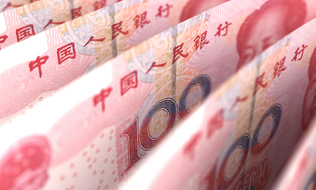

Often considered a market difficult for institutional investors to enter, China is “too big to ignore,” according to one China expert. Fortunately, many signs point to the market becoming more attainable.
Speaking at an event hosted by Mackenzie Investments at the National Club in Toronto on Tuesday, Tony Tang, chief executive officer of China Asset Management Ltd., noted MSCI Inc. is adding more than 200 Chinese A-shares to its emerging market index in 2018. While the stocks in question will represent less than one per cent of the overall index, Tang suggested China will become a much larger part of similar baskets in the years ahead. This could, in turn, lead to simple, passive investment strategies, like exchange-traded funds, holding more exposure to the country, he said.
Read: What does MSCI inclusion of Chinese A-shares mean for institutional investors?
“Even though a lot of people say China’s markets can be volatile, in the long run you see the absolute return [of the CSI 300 Index] is still exceeding the TSX and the S&P 500, with lower correlation with those two markets,” said Tang. “It would be an ideal component to the portfolio that most of the investors here in Canada are holding.”
One area of interest is China’s growing consumption habits. Consumption upgrades are a major driving force at present, noted Tang, referring to the trend that as people grow richer their consumption habits change to reflect their higher income, and they replace items like clothing, electronics, furniture and vehicles with costlier versions.
Florian Ielpo, head of macroeconomic research at Unigestion in Geneva, Switzerland, agrees. “What people are expecting from China is to see a rise in consumption. That’s an essential step to become finally a developed economy. And it seems that this rise in consumption is happening now.”
Read: Which frontier markets are institutional investors exploring?
The internet economy is also key, said Tang, including areas like gaming, advertising and online shopping. China has more than 650 million smartphone users, almost half its population, he notes. And people are using their phones to spend money, either by buying things online or using mobile payment in stores.
Demand in China’s service sector also plays a big role, representing more than 50 per cent of total GDP, said Tang. Further, it represents 60 per cent of the overall percentage of GDP growth. “It’s a very robust area,” he added.
There are, of course, serious risks to bear in mind, such as China’s debt levels, says Ielpo. “They have basically been able to accumulate the Japanese government debt for their economy, while still being an emerging economy. It’s quite significant, and it’s an essential source of risk for China.”
China’s foreign currency reserve is also an area of concern. During the event in Toronto, Tang pointed out that if 20 million Chinese people, just roughly 1.4 per cent of its population, withdrew their permitted amount of foreign currency, it would “create a huge problem.”
